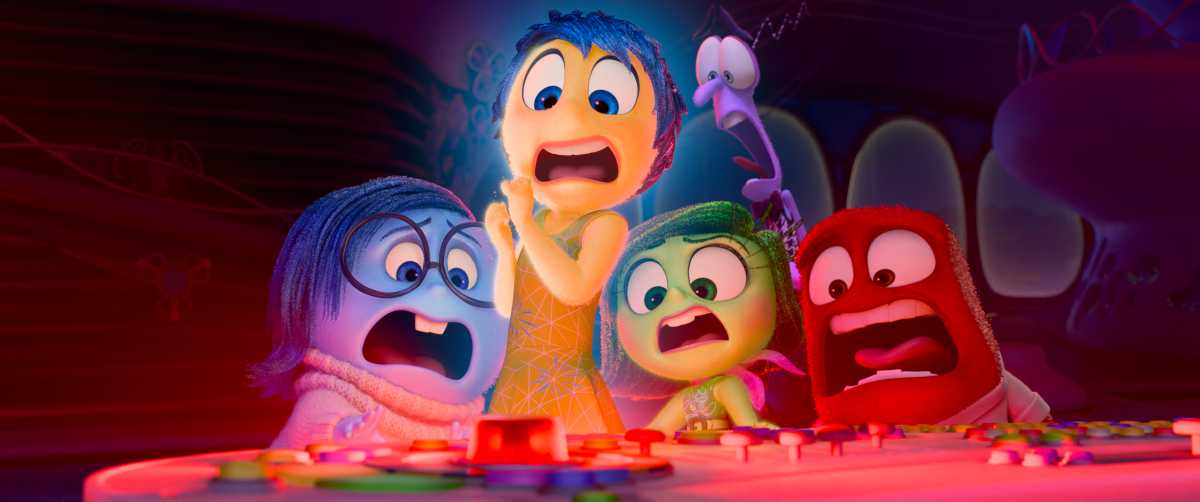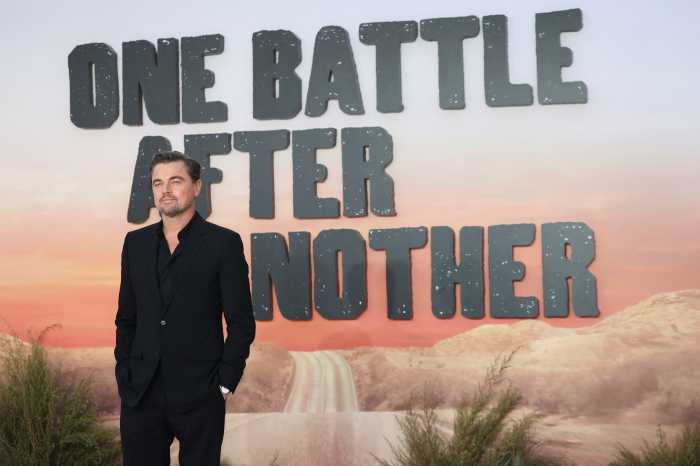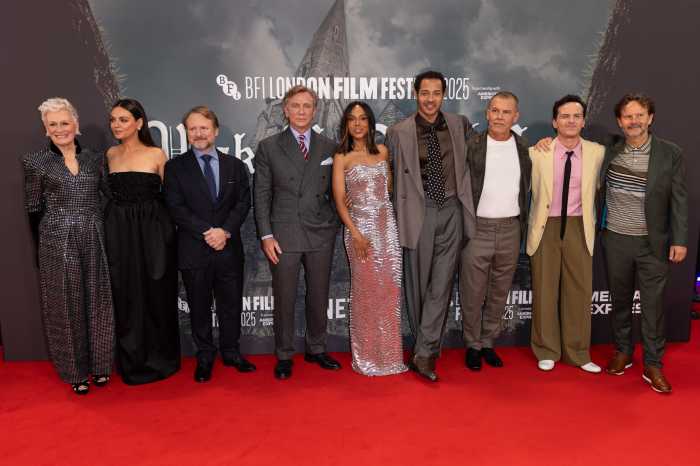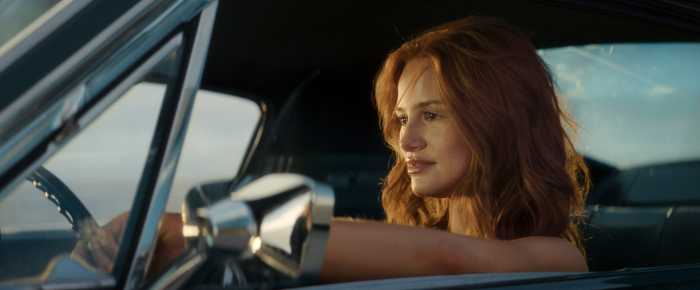The 2017 film ‘Inside Out’ was an instant success, and now with the sequel ‘Inside Out 2’ opening in theaters this week, fans are anticipating the animated tale’s next chapter. Stepping into the role of Fear for this feature, Tony Hale has replaced Bill Hader in the story, which follows tween Riley (Kensington Tallman) trying to navigate the world of friends, school and hockey with some help from her emotions, like Joy (Amy Poehler), Anger (Lewis Black) and Sadness (Phyllis Smith.)
In this go-around, some new emotions have been introduced to go along with Riley’s maturing (including Anxiety, played by Maya Hawke), and to delve a little deeper into the evolving story, Hale has sat down to discuss what makes ‘Inside Out 2’ a perfect perception of the emotional life for kids and adults alike.
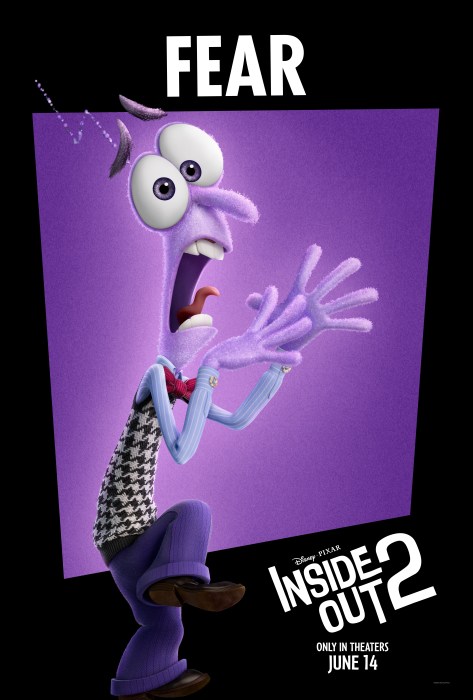
I heard you were a huge fan of the first movie. How did it feel to get the call about being in ‘Inside Out 2’?
Anytime Pixar calls, it’s just like a Pavlovian jump—anytime you’re invited to that party, it’s exciting. But the first movie was, and I genuinely mean this, it wasn’t just my favorite animated movie, it was pretty much one of my favorite movies of all time. The way Pixar has orchestrated the emotional life and made it very accessible, that is a game changer because obviously, we know that the emotional life is very complex. To make it accessible to both adults and kids is brilliant.
What were your initial thoughts on playing the character of Fear?
I’ve had a lot of experience in that, so I had much to draw from. It was more of my immediate question was the difference between fear and anxiety. Just how they distinguish them…they said anxiety is a perceived threat, whereas fear is an actual threat—that really made it very clear to me.
And voice acting in general is so wild, [you’re]never really with the other cast members, so you really trust the director a lot to keep giving you storylines, and he has to play with different voices. He [Kelsey Mann] was always like, all right, let’s go higher or let’s go a little lower. It’s a real collaborative experience.
I was curious too, since you’re playing such a specific emotion, if there was another level of something you had to do to portray that through just your voice?
Yeah, having done comic acting for a long time, I relied so much on my physicality with the comedy—whether it be like a side eye or seeming nervous. With voiceover, when I started doing it, I did have some anxiety, for lack of a better word, getting into it and worrying that I wouldn’t be able to deliver just with a microphone without my body.
But then I learned to do the same performance in front of the mic that I would do in front of the camera, whether it be ‘Toy Story’ or this, just acting like an insane person in front of the microphone in hopes of getting that same energy into the character. And it’s a blast. It’s like you’re doing children’s theater and it’s just super fun.
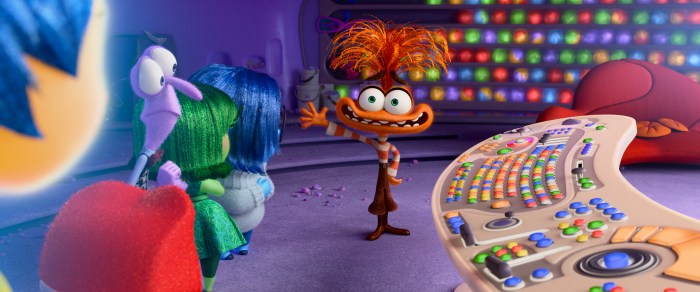
Another fun part of this movie is seeing the visual representation of emotions—I loved Nostalgia in this film. Were there any other characters that stood out to you in that way?
Oh, man. I mean, gosh, that first one, obviously Sadness, just her kind of blue state was always so sweet to watch. But with these new emotions, again, the brilliance of Pixar, the fact that Anxiety comes in with luggage is so genius and that she just has this harried hair and she’s bright orange. Embarrassment is pink…I mean, the whole characteristic of each of ’em is so great. And just even the distinction between Disgust and Envy, I love that.
It’s just a way that kids and parents and anyone can see emotions in a different light. And on top of that, just have compassion towards the emotions… The emotions are trying to help you, they’re not against you. I know when I was a teenager, I did feel very alone, there was that whole picture of the demolition coming into the emotional world and just wrecking everything. And that’s how I felt.
I was like, what’s happened to my body? Why are my senses all heightened with things? I’m more nervous, I’m more all that kind of stuff. And just to have a simple language, simple characters that just visually describe what’s going on in the mind, it just has not been done [before.]
What do you hope this sequel brings to fans of the first film and new fans?
I wish I had this movie a few years back when my daughter was a teenager. I think the sense of obviously for kids to feel seen is a big one, but adults, I mean specifically parents, where it’s that sense of, oh, there’s that character, like Boredom. She sits around and she’s bored. When my daughter was on the couch, I’m like, get up, get up. What’s going on? It’s just realizing that’s a part of the process.
She’s trying to figure it out, there’s a lot going on in their brains. They need to rest. Just to have that framework to be like, hey, let’s go a little easier on each other and let’s go a little easier on ourselves. But again, just a simple, brilliant way they put it in this animated form is a gift to us all.
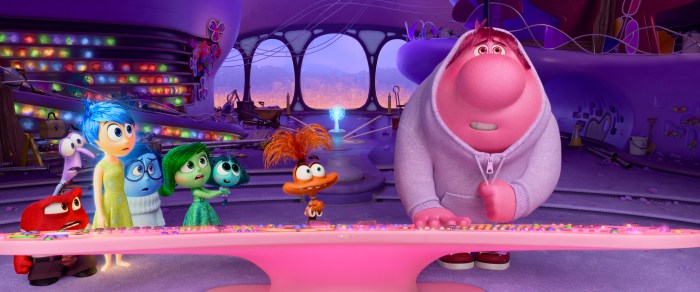
‘Inside Out 2‘ is now showing in theatres.



